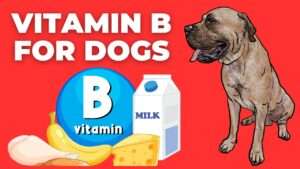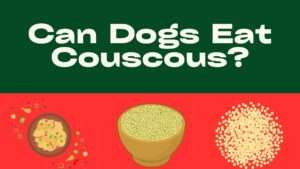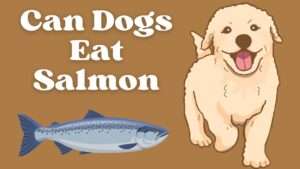Are you pondering over whether your furry friend can munch on some celery? It’s a valid question!
Dogs have different dietary needs compared to humans, and what’s healthy for us might not always be safe for them.
Let’s delve into the world of canine nutrition and explore whether celery is a suitable treat for your pup.
Contents Overview
What is Celery?
Celery, scientifically known as Apium graveolens, is a green, leafy vegetable with long, fibrous stalks and leafy tops.
It belongs to the Apiaceae family, along with carrots, parsley, and fennel.
Celery is commonly consumed raw as a snack or added to salads, soups, and stir-fries for its distinctive crunch and subtle flavor.
Nutritional Value of Celery
Despite its low-calorie count, celery is packed with essential nutrients that promote overall health.
It is an excellent source of vitamin K, providing more than 30% of the recommended daily intake in just one cup.
Additionally, celery contains vitamin C, potassium, folate, and dietary fiber, which contribute to a healthy immune system, digestion, and heart function.
Celery contains antioxidants like flavonoids and beta-carotene, which help combat oxidative stress and promote cell health in dogs.
Can Dogs Eat Celery Safely?
Yes, dogs can safely enjoy celery in moderation as an occasional treat. Celery is low in calories and rich in vitamins and minerals, making it a healthy option for dogs when served in small quantities.
However, it’s essential to prepare celery properly for your furry friend. Remove any strings or fibrous parts that may pose a choking hazard, and always chop them into small, manageable pieces to prevent choking.
Introduce celery gradually into your dog’s diet to ensure they tolerate it well, and monitor for any signs of digestive upset. As with any new food, moderation is key to preventing potential gastrointestinal issues.
Health Benefits of Celery for Dogs
Let’s delve into the potential benefits of celery for dogs and how you can incorporate it into their meals.
1- Dental Health
Chewing on celery can act as a natural toothbrush for your dog, helping to scrape away plaque and tartar buildup.
The fibrous texture of celery can also stimulate saliva production, which helps to wash away food particles and bacteria, contributing to fresher breath and healthier teeth and gums.
2- Hydration
Celery has a high water content, making it a hydrating snack for your dog, especially on hot days or after physical activity.
Proper hydration is essential for your dog’s overall well-being, helping to regulate body temperature, aid digestion, and flush out toxins.
3- Weight Management
Celery is low in calories and fat, making it an excellent option for dogs that need to shed a few pounds or maintain a healthy weight.
Incorporating celery into your dog’s diet as a low-calorie treat can help prevent overeating and support weight management efforts.
4- Digestive Health
The fiber content in celery can aid in digestion and promote regular bowel movements in dogs. This can be particularly beneficial for dogs prone to constipation or digestive issues.
However, it’s essential to introduce celery gradually into your dog’s diet to avoid any digestive upset.
5- Joint Health
Celery contains compounds like luteolin and polyacetylenes, which have anti-inflammatory properties that may help reduce inflammation and support joint health in dogs, especially those with arthritis or joint stiffness.
Risks and Precautions of Feeding Celery to Dogs
Here’s a comprehensive look at the possible downsides of feeding celery to dogs and how to mitigate them:
Choking Hazard
- Celery’s fibrous texture can pose a choking risk, especially for dogs that gulp down food quickly or have difficulty chewing.
- To prevent choking, always cut celery into small, manageable pieces before offering it to your dog.
Digestive Upset
- Introducing celery abruptly into your dog’s diet can lead to digestive issues such as diarrhea, gas, or vomiting.
- To avoid digestive upset, start with small amounts of celery and gradually increase the quantity over time to allow your dog’s digestive system to adjust.
Pesticide Residues
- Celery is one of the vegetables on the Environmental Working Group’s “Dirty Dozen” list, which means it’s more likely to contain pesticide residues.
- To minimize exposure to pesticides, opt for organic celery whenever possible or thoroughly wash conventionally grown celery before feeding it to your dog.
Sodium Content
- Celery naturally contains sodium, albeit in small amounts.
- While moderate sodium intake is generally safe for dogs, excessive sodium can lead to health issues such as increased thirst, urination, and even sodium ion poisoning in severe cases.
- Avoid seasoning celery with salt or feeding salty celery-based snacks to your dog.
Allergic Reactions
- Although rare, some dogs may be allergic to celery, experiencing symptoms such as itching, skin rashes, or gastrointestinal distress.
- Monitor your dog closely for any signs of allergic reactions after introducing celery into their diet and consult your veterinarian if you suspect an allergy.
Interactions with Medications
- Celery contains compounds that may interact with certain medications or exacerbate underlying health conditions in dogs.
- If your dog is on medication or has a pre-existing medical condition, consult your veterinarian before adding celery to their diet to ensure it’s safe for them.
Safe Ways to Feed Celery to Dogs
Here’s a guide on safe ways to incorporate celery into your dog’s diet:
-
Wash Thoroughly:
- Before serving celery to your dog, ensure to wash it thoroughly under running water to remove any dirt, pesticides, or bacteria that may be present on the surface.
-
Cut into Bite-Sized Pieces:
- Cut celery into small, bite-sized pieces to prevent choking hazards, especially for smaller breeds or dogs with dental issues. The smaller pieces also make it easier for your dog to chew and digest.
-
Offer Plain Celery:
- Serve plain celery without any added seasonings or dips. Avoid seasoning celery with salt, spices, or other flavorings, as they can be harmful to your dog’s health.
-
Incorporate into Meals:
- Mix chopped celery into your dog’s regular meals as a nutritious addition. You can blend it with their kibble, cooked meat, or homemade dog food for added flavor and texture.
-
Freeze for Summer Treats:
- During hot weather, freeze small pieces of celery to create refreshing treats for your dog. Frozen celery can provide relief from the heat while offering hydration and nutrients.
-
Use as Dental Chews:
- Offer celery sticks as natural dental chews to help clean your dog’s teeth and promote oral health. The fibrous texture of celery can help remove plaque and tartar buildup, reducing the risk of dental issues.
-
Monitor Portion Sizes:
- While celery is low in calories, it’s essential to monitor portion sizes to prevent overfeeding. Treat celery as a snack or occasional treat and incorporate it into your dog’s diet in moderation.
-
Introduce Gradually:
- Introduce celery into your dog’s diet gradually, starting with small amounts to assess their tolerance and prevent digestive upset. Monitor your dog for any adverse reactions, and adjust the portion size accordingly.
-
Consult Your Veterinarian:
- If you have any concerns or questions about feeding celery to your dog, consult your veterinarian for personalized advice. They can provide guidance based on your dog’s specific health needs and dietary requirements.
When to Avoid Celery to Dog
- Allergic Reactions: If your dog has a known allergy to celery or experiences allergic symptoms such as itching, rashes, or gastrointestinal distress after consuming it.
- Choking Risk: If your dog has difficulty chewing or tends to swallow food whole, celery’s fibrous texture may pose a choking hazard.
- Digestive Sensitivity: If your dog has a history of digestive issues or sensitivity to new foods, introducing celery abruptly could lead to gastrointestinal upset.
- Underlying Health Conditions: If your dog has certain medical conditions such as kidney disease, diabetes, or pancreatitis, celery’s high water and fiber content may not be suitable for them.
- Medication Interactions: If your dog is on medication, especially blood thinners or diuretics, celery may interact with certain medications and exacerbate underlying health conditions.
Alternatives to Celery
If you’re hesitant about feeding your dog celery or if they have trouble digesting it, there are plenty of safe alternatives to consider.
Some dog-friendly fruits and vegetables include:
These options provide similar nutritional benefits to celery without the potential choking hazard or digestive issues.
Bottom Line
In conclusion, while celery is not inherently toxic to dogs and can offer some nutritional benefits, it’s essential to proceed with caution.
Always chop the celery into small, manageable pieces, and monitor your dog for any adverse reactions.
Remember, a balanced diet tailored to your dog’s specific needs is key to their overall health and well-being.



































+ There are no comments
Add yours